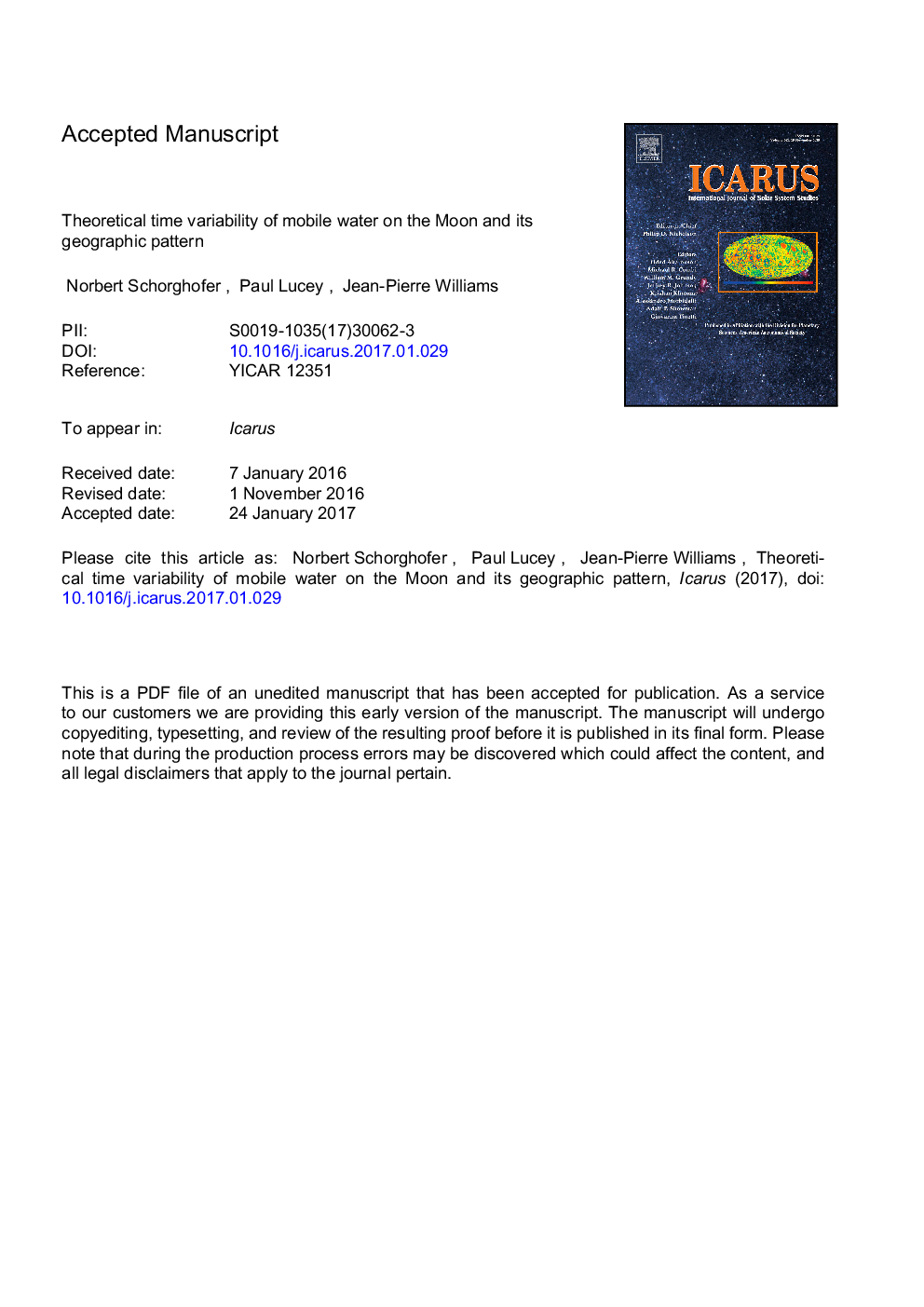| Article ID | Journal | Published Year | Pages | File Type |
|---|---|---|---|---|
| 5487345 | Icarus | 2017 | 12 Pages |
Abstract
A lunar water exosphere, if it currently exists, would lead to diurnal variations in surface water concentration. Here we present model calculations that reveal the specific geographic pattern of such diurnal variations as well as the amplitude of these variations relative to an assumed supply rate. Surface temperatures are derived from Diviner data and hence include topographic temperature heterogeneity. In the polar regions, diurnal variation can be one order of magnitude larger than at the equator and two hundred times larger than the monthly globally average water production density. Even so, the absolute size of any diurnal changes in surface concentration is likely too small to be measurable. An episodic source, that delivers the same mass over a sol (lunation) as a steady source, leads to comparable surface concentrations, but to a much denser exosphere with a half-life of a few Earth hours. Such a transient exosphere may already have been detected.
Related Topics
Physical Sciences and Engineering
Earth and Planetary Sciences
Space and Planetary Science
Authors
Norbert Schorghofer, Paul Lucey, Jean-Pierre Williams,
